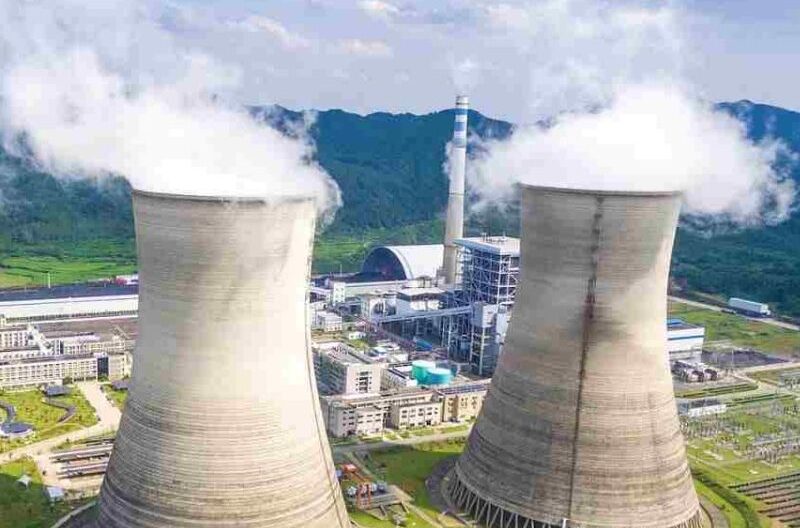
Cooling systems in large buildings run on precision and balance. Behind the scenes, pipes, pumps, and valves work together to keep temperatures steady. Without the right parts, these systems fail or waste energy. A reliable chilled water piping system must include specific components that guide flow, manage pressure, and keep the system clean.
Proper system design doesn’t just ensure comfort — it affects energy efficiency, equipment longevity, and overall operational costs. Understanding the essential components can help prevent common issues and improve long-term performance.
Let’s explore the seven essential pieces that every well-built cooling system needs.
1. Chillers: The Heart of Cooling
Chillers absorb heat and move it out of the building. They cool water by compressing and expanding a refrigerant. This chilled water then flows through the system to fan coils or air handlers.
Chillers should match the building’s size and cooling needs. If too small, they overwork. If too large, they waste power. Each chiller must cycle water through the system with care.
Modern chillers also include smart controls and sensors. These features help optimise load conditions and detect inefficiencies early, reducing unnecessary wear and tear.
2. Pumps: The Muscle That Moves Water
Pumps push water through the system. They make sure cold water reaches the air handlers and warm water returns to the chillers. Without strong pumps, water stays still and cooling stops.
Two types of pumps serve these systems: primary and secondary. Primary pumps keep the loop between the chiller and main pipes. Secondary pumps move water to the spaces that need cooling.
Variable-speed drives (VFDs) are often used on pumps to control their output. These help save energy by adjusting flow based on actual demand rather than running at full speed all the time.
3. Expansion Tanks: Balancing Pressure
Water expands as it warms. If the system doesn’t allow for this, pipes can burst or seals may leak. Expansion tanks collect this extra volume.
They include a bladder or air cushion that squeezes when water expands. This keeps the pressure stable. Every chilled water piping system should include one of these for safety.
Over time, the internal bladder can degrade. Regular inspection ensures the tank is still doing its job and prevents unwanted surges in pressure.
4. Air Separators: Clearing Bubbles
Air often creeps into water systems. These bubbles block flow and damage pumps. Air separators catch and release trapped air, keeping water moving smoothly.
Some use a mesh or screen that gathers tiny air pockets. Others spin the water to push bubbles out. Without this step, air pockets cause noise and slow the system down.
In larger systems, automatic air vents are often installed at high points in the piping to continuously bleed out accumulated air without manual effort.
5. Strainers and Filters: Guarding the Flow
Pipes collect dirt, rust, or debris over time. If this clogs the system, parts wear down. Strainers catch solids before they reach pumps and coils.
Placed at key points in the line, these filters trap grime and protect equipment. Workers clean them regularly to avoid buildup.
Some systems now include magnetic strainers, which are especially effective at capturing fine metallic particles that might slip through standard screens.
6. Control Valves: Guiding the Flow
Valves guide how much water flows through each part. They open or close based on room needs. This keeps every space at the right temperature.
The system may use three-way or two-way valves. Some balance pressure, others stop flow completely. With smart valve control, the system uses only as much water as needed.
Newer valve designs include pressure-independent control valves (PICVs), which combine balancing and control functions. These help maintain performance even under varying flow conditions.
7. Piping and Insulation: The Hidden Framework
The pipes carry chilled water from the chiller to the building and back. These must resist corrosion and hold strong under pressure. Steel and copper serve most systems well.
Insulation wraps around the pipes. It keeps heat from sneaking into the cold water. Without this layer, the system loses power, and water drips onto other equipment.
Foam or fibreglass insulation also prevents condensation, protecting ceilings and electrical systems below. Double-layer insulation may be used in high-humidity environments.
Key Components and Their Roles
| Component | Role in the System | Why It Matters |
| Chiller | Removes heat from water | Keeps the system cold |
| Pump | Pushes water through pipes | Maintains steady flow |
| Expansion Tank | Handles water volume changes | Prevents pipe damage |
| Air Separator | Removes air from water | Stops noise and pump failure |
| Strainer/Filter | Blocks dirt and debris | Protects internal parts |
| Control Valve | Regulates flow to zones | Keeps comfort levels steady |
| Piping + Insulation | Transports and protects chilled water | Cuts energy loss and system strain |
How These Parts Work Together?
No part works alone. Pumps need clean water from strainers. Valves rely on steady pressure from expansion tanks. Chillers require a constant flow to keep cooling stable. Each piece supports the next.
When one component fails, the others struggle. If pipes clog, chillers overheat. If pumps stop, valves receive no water. A successful system must stay balanced.
Coordination is key, and that’s why modern building automation systems (BAS) integrate sensors and data to track how each part functions in real-time. This boosts reliability and helps prevent downtime.
Smart Design Makes the Difference
Before installing anything, engineers must plan. They calculate pressure, flow rates, and pipe sizes. They place parts in the best spots to reduce bends and boost speed.
If the design fails, even good parts won’t help. For example, placing a pump too far from the chiller weakens its push. Skipping a filter lets dirt harm other tools.
Good design also considers redundancy. Backup pumps or dual strainers can keep things running when maintenance is needed, without affecting comfort or efficiency.
Maintenance Keeps Everything Smooth
Even the best system needs care. Filters clog, tanks wear out, and seals crack. Monthly checks help workers spot these problems early.
Technicians drain air from separators, clean strainers, and test valves. They also measure water quality to avoid scale or corrosion.
Digital tools and cloud-based logs now help teams track system performance over time, enabling predictive maintenance and reducing emergency repairs.
Real-Life Tip: Size Everything Right
Oversized pumps force too much water, wasting power. Undersized tanks can’t hold pressure. Each piece must match the whole system.
Engineers often use flow charts and software to plan this. Smart sizing means the system runs without stress, and parts last longer.
A well-sized system also avoids excessive noise and vibration, which are common side effects of mismatched components.
Signs of Trouble and Fixes
| Problem Sign | Possible Cause | Suggested Fix |
| Water hammer noise | Air in the system | Check the air separator, bleed air |
| Weak cooling in zones | Valve or flow issue | Inspect control valves and filters |
| High pressure on gauges | Expansion tank undersized | Replace or adjust the tank size |
| The pump runs hot | Low water or a blocked pipe | Clean strainers, check water level |
| Pipe condensation | Damaged or missing insulation | Rewrap pipes with fresh insulation |
The Role of the Chilled Water Piping System in Large Buildings
Every large building relies on its chilled water piping system to keep people cool and machines running. Offices, hospitals, and factories use these systems daily. They support comfort, safety, and even energy savings.
A strong setup means fewer repairs and lower bills. When each part works as planned, air stays cool and the system lasts longer.
These systems often operate around the clock, especially in critical environments like data centres. That makes reliability and efficiency even more important.
Simple Rules for Great Results
To keep your system strong, follow these habits:
- Choose quality pipes and fittings
- Place filters and valves in easy-to-reach spots
- Wrap every pipe with tight insulation
- Test pumps monthly and clean strainers often
- Monitor pressure and flow with gauges
These simple steps help avoid big costs later. Staying proactive with inspections can prevent issues before they grow.
Conclusion
Every part of a chilled water piping system matters. From pumps that push to valves that guide, each piece supports comfort and safety. Without these seven components, systems risk failure, waste, and damage. Ignoring their importance can lead to inefficiencies that cost both time and money. Ensuring each component functions optimally is key to long-lasting performance.
Build it right. Maintain it well. Stay cool without worry.




